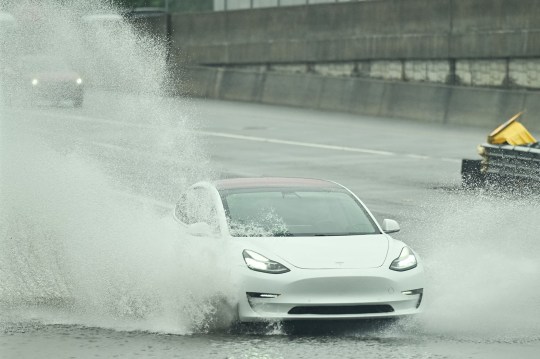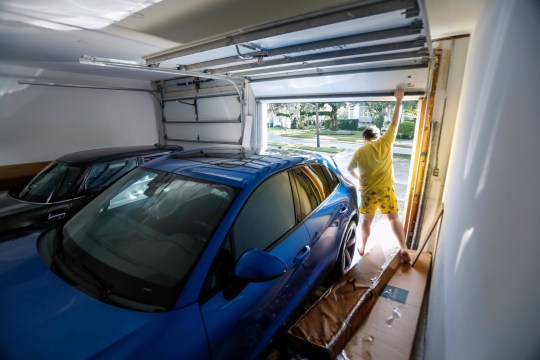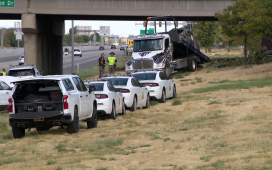Electric vehicles that have been flooded with saltwater are being treated as a potential fire hazard in the wake of Hurricane Helene.
Officials are urging those who evacuated and left electric vehicles or golf carts in garages or under buildings to report them if they cannot safely access or move the vehicles.
Saltwater exposure can damage the battery components in electric vehicles, potentially leading to dangerous chemical reactions that could cause the vehicle to catch fire.
Residents who may have left electric vehicles behind when they evacuated from affected areas are being urged to contact the local emergency services.
Recovery operations continue, and authorities say they want to mitigate any potential hazards caused by damaged electric vehicle batteries.
(Picture: Christopher Oquendo/ZUMA Press W)
Emergency responders have advisedresidents not to move a flooded electric vehicle themselves but instead contact authorities for help.
Florida, Georgia, North Carolina, South Carolina, Alabama and Virginia have all declared emergencies in the wake of the devastating hurricane that swept the southern United States.
Sixty-four people are believed to have died, and millions have been affected by power outages.
According to officials a number of people were left stranded or without shelter across the region. About 2.7 million households were without power throughout the south-east, down 40 per cent from a peak of 4.6mn on Friday, according to the energy department.
The storm could result in up to $34bn in losses from damage to property and reduced economic output, according to Moody’s. Forecaster AccuWeather’s preliminary damage estimate was higher at between $95bn and $110bn, suggesting Helene might be one of the most destructive in America’s history.
The US government’s Federal Emergency Management Agency is co-ordinating a rescue and clean-up operation involving 3,200 personnel across the six states where emergencies were declared.
The storm, which has weakened from its peak strength of 140mph winds, is expected to dissipate by Monday.
North Carolina was the state most affected by the storm, where 25 people were killed, the highest death toll in the state since Hurricane Hugo in 1989.
(Picture: AP)
President Joe Biden has declared major disasters for North Carolina and Florida, unlocking federal assistance programmes for the areas affected by the storm.
He also approved emergency disaster declarations in Alabama, Georgia, South Carolina and Tennessee.
North Carolina governor Roy Cooper posted on social media platform X on Sunday that the western part of the state ‘has been hit hard and we are working together rapidly to save lives, surge assistance and begin a difficult recovery’.
The US National Weather Service office in South Carolina said the storm was ‘the worst event in our office’s history”’
‘We are devastated by the horrific flooding and widespread wind damage that was caused by Hurricane Helene across our forecast area,’ it added.
Get in touch with our news team by emailing us at webnews@metro.co.uk.
For more stories like this, check our news page.
MORE : UK predicted to get hotter and drier by 2075 – except for in one major city
MORE : Yellow weather warning double-whammy with 80mm rain and 60mph wind expected
MORE : Hurricane Helene sweeps across America as death toll hits 44
Get your need-to-know
latest news, feel-good stories, analysis and more
This site is protected by reCAPTCHA and the Google Privacy Policy and Terms of Service apply.









